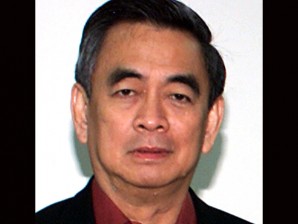Portrait of a publisher: I’ve got work up to here
CAMBRIDGE, Massachusetts—Isagani “Gani” Yambot had a characteristic gesture: to describe the volume of work he found himself always attending to, he would raise a level palm to his neck and say, in Filipino, “I’ve got work up to HERE.”
He was neither bragging nor whining, just describing—simply and accurately—the work that needed to be done.
There certainly was a lot of work. To the cascade of reluctant goodbyes and fond reminiscences now swirling about his good name, I would like to add a portrait of Gani, who died at the age of 77 on Friday, as a tireless, conscientious, shoulder-to-the-wheel publisher.
The publisher’s job in the Philippine Daily Inquirer is different from how it is traditionally understood. Gani, who was named publisher in 1994, did not run the business side of the newspaper.
Instead, he served in a multiplicity of “bridging” roles, each one highly demanding, each one a full-time job on its own.
Article continues after this advertisementHe served as the Inquirer’s link to the community at large, representing the newspaper at home and abroad in an unending series of forums and conferences. His appearances were an integral part of the corporate strategy of exercising news leadership, and they took up an inordinate amount of time.
Article continues after this advertisementBut whether it was for a small school event or a high-profile assembly, he always kept the same disciplined routine (I saw this for myself many times): he would prepare for each talk by taking the time to write down his remarks.
Inquirer’s voice
He served as the Inquirer’s voice in the news industry, conscious that with news leadership came important responsibilities.
As the National Union of Journalists in the Philippines noted in its press statement, he was a staunch advocate of press freedom; to this same cause he brought the newspaper’s prestige and influence to bear, concurrently serving on the board of various industry organizations, including the Philippine Press Institute.
He served as the common reader’s advocate in the newsroom. In his capacity as custodian of the Inquirer stylebook, he helped the editorial staff navigate the distance between objective and execution, between ideal and daily reality. (It helped that he had written most of the stylebook himself.)
He presided over the weekly postmortems, the so-called editorial assessment meetings, carefully identifying mistakes (most grammatical, some stylistic, a few ethical) and recognizing good work.
‘Good job’
In fact, he liked to do this happy task outside the meeting room, popping his head over one’s shoulder to say, “Good job.” The assessments required a lot of preparation and considerable follow-up; it was consuming work.
And sometimes, it could be quite contentious. I cannot forget his impassioned cry during one particularly difficult assessment: “No one is above the laws of journalism!”
Not least, he served as the bridge between the Inquirer and the world of opinion; he was ultimately responsible for the newspaper’s opinion pages, dealing with columnists (down to the nitty-gritty of annual contracts) and exercising “last look” privileges.
It was in this capacity that I got to know Gani the most, because I worked with him and for his editorial board.
Some of the best
He wrote editorials, too, and several of them are on the list of the best editorials of the Inquirer’s first 25 years (published in the commemorative book, “From Ninoy to Noynoy”).
In the 10 years I worked under him, I saw him retain until the end the habits of the diligent reporter—thoroughly researching the editorials he wrote at least two days in advance, and then writing them to deadline.
There were many other tasks Gani attended to: fielding an uninterrupted stream of students’ interviews, receiving diplomats and other VIPS who called on the newspaper, selecting prize-worthy stories and columns for competitive awards (he wrote many of the nominations himself, another time-intensive task), responding on behalf of the Inquirer whenever the newspaper found itself on the receiving end of the news, serving as the owners’ representative in the newsroom.
To each of these responsibilities, Gani brought the same commitment to hard work.
One image I have of him, repeated so often the outlines blur, captures all this: It is almost midnight and Gani, after making an appearance at one or two evening events, is back in the office, handling the proofs of the next day’s issue, poring over the newspaper he loved.
Originally posted: 9:43 pm | Sunday, March 4th, 2012
